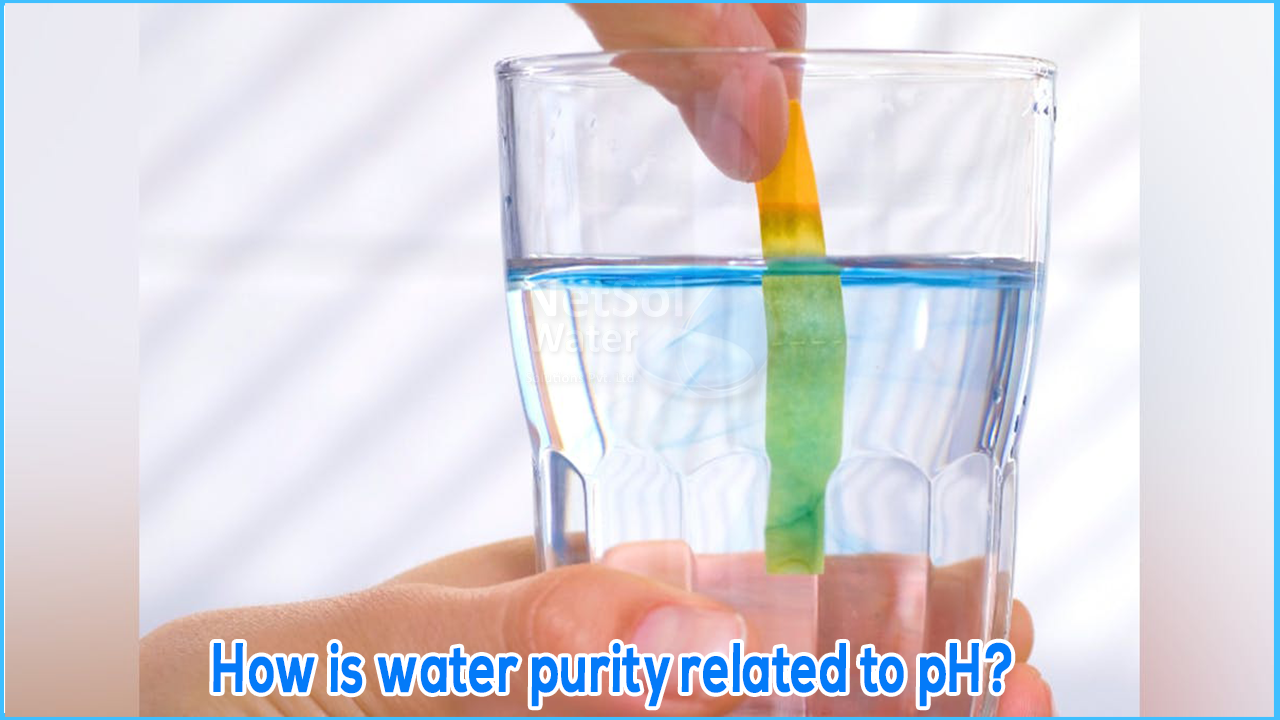WHAT IS pH?
pH is a measure of how acidic/basic the water is. The range is 0 to 14, with 7 being neutral. pH values less than 7 indicate acid, while pH values greater than 7 indicate base. Water pH is a very important measure of water quality. The pH value is a measure of how acidic / basic the water is. Water with more free hydrogen ions is acidic, while water with more free hydroxyl ions is basic. Since pH can be affected by chemicals in water, pH is an important indicator that the water is changing chemically. The pH is expressed in "logarithmic units". Each number represents a 10-fold change in the acid/base content of the water. Water with a pH of five is ten times more acidic than water with a pH of six.
The pH value of water determines the solubility (amount that can be dissolved in water) and the biological availability (amount that can be used by aquatic life) of chemical components such as nutrients (phosphorus, nitrogen and carbon) and heavy metals Lead, Copper, Cadmium, etc, For example, the pH value not only influences the amount and the most common form of phosphorus in the water, but also whether aquatic organisms can use it. In the case of heavy metals, the degree of solubility determines their toxicity. Metals tend to be more toxic at lower pH levels because they are more soluble.
Too high or too low pH values can be detrimental to the use of water. A high pH value causes a bitter taste, water pipes and devices that consume water become encrusted with deposits and impair the effectiveness of chlorine disinfection, which means that additional chlorine is required at a high pH value. Low pH water corrodes or dissolves metals and other substances.
Pollution can change the pH value of the water, which in turn can harm the animals and plants that live in the water. For example, the water that comes from an abandoned coal mine can have a pH of 2, which is very acidic and would affect any fish crazy enough to try to live in it. Using the logarithmic scale, the drainage water from this mine would be 100,000 times more acidic than neutral water.
There is no legally applicable standard for the pH value of drinking water, as the pH value is considered the aesthetic quality of the water. However, recommended pH is between 6.5 and 8.5 for drinking water. Since metals dissolve easily in acidic water, there can be dissolved metals in drinking water at low pH. Metals such as iron, manganese, copper, and lead can enter drinking water through pipes or the local aquifer.
In acidic water, iron produces a metallic taste and reddish stains on clothing and pipes, while other metals such as lead are poisonous. Alkaline or "hard" water contains excess calcium and other minerals that cause the familiar scale deposits on cookware and a bitter taste in coffee.
pH value and groundwater
Groundwater flows through rocks and soil, which can affect the pH value of the water. For example, contact with sandstone leads to a nearly neutral pH value between 6.5 and 7.5. Limestone, on the other hand, can lead to an alkaline pH of 8.5.
Soils contain minerals and other substances that affect the pH of groundwater. The decomposition of organic matter in the soil causes the pH value in groundwater to drop to 4.0. This pH value is well below the recommended pH value of 6.5 to 7.5 for drinking water. Man-made pollution also affects the pH of groundwater. For example, runoff from shale and coal mining contains iron sulphide, which can result in pH levels as high as 2.
pH value and streams and lakes
The pH value in a lake or stream is crucial for the survival of fish and aquatic plants. Freshwater lakes and streams typically have pH levels between 6.0 and 8.0. Deeper lakes tend to have a higher pH near the surface. Aquatic organisms are sensitive to changes in pH. For example, the optimum pH for fish is between 6.5 and 9.0. At concentrations outside this range, fish become susceptible to poisoning by toxic chemicals. Changes in pH can also overload available plant nutrients, resulting in overgrowth of plants and decreased oxygen levels for fish. This condition, known as eutrophication, threatens the survival of plants and animals in the water.
Testing water with a pH meter
Scientists use a pH meter to measure the pH in water. Water testing is done on site with a relatively small portable measuring device or in a laboratory with a larger benchtop measuring device. The benchtop meter has a beaker containing the water sample and a glass probe with two special electrodes. The pH electrode measures the acidity of the water sample while the reference electrode is immersed in a liquid with a fixed acidity. After comparing the measured value of the pH electrode with the measured value of the reference electrode, the measuring device converts the voltage into a pH value.
A pH meter provides a much more accurate reading than a test strip kit and eliminates the mess associated with using droppers. Calibration before analysing water samples ensures that the pH meter provides accurate test results and readings.
Importance of pH value in water
Water quality is of decisive importance for all living things, as well as for agriculture and recreation. Optimal pH levels are an essential factor in maintaining water quality and healthy ecosystems. Accurate pH tests help keep drinking water and groundwater safe and protect aquatic plants and animals.




